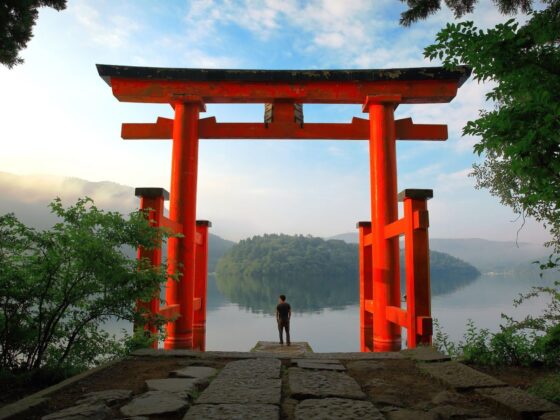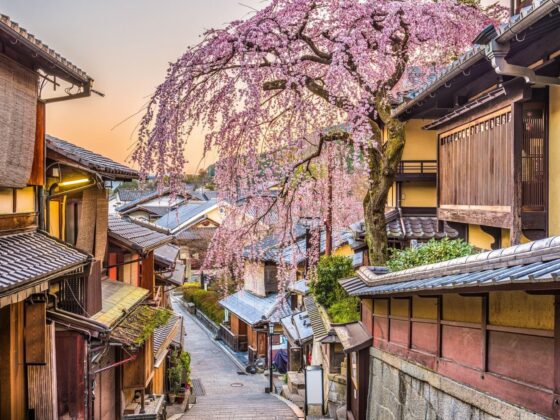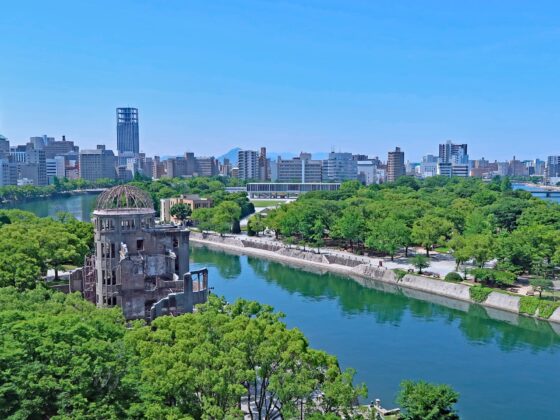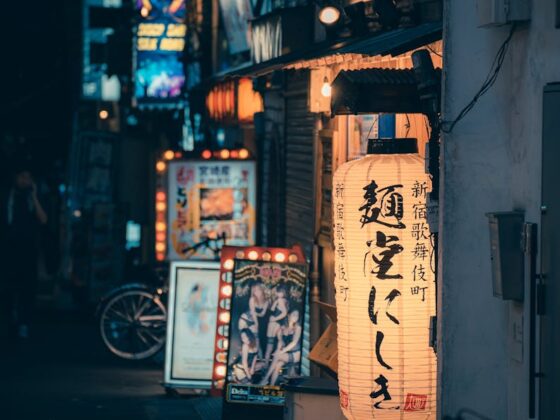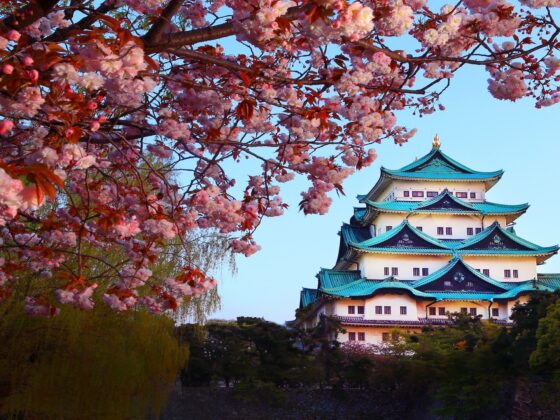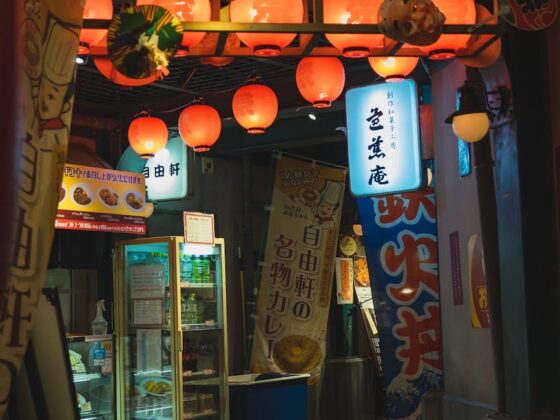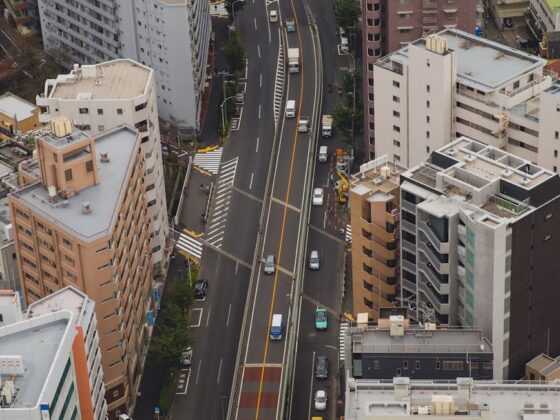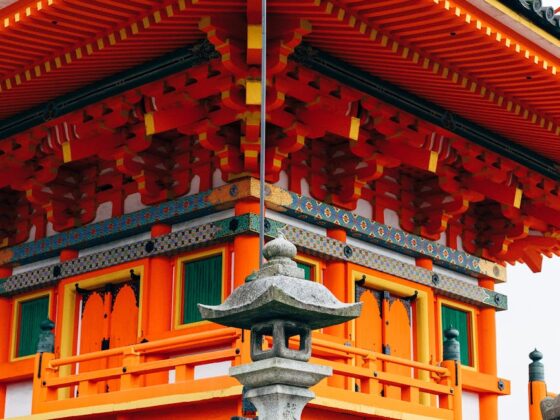Shinkansen Travel Guide
Introduction to Shinkansen Trains
The Shinkansen, often called the “bullet train,” is a network of high-speed trains in Japan known for their efficiency, punctuality, and comfort. Since its debut in 1964, the Shinkansen has transformed travel across the country, connecting major cities and regions at impressive speeds. With some trains reaching speeds of up to 320 km/h (about 200 mph), the Shinkansen offers a quick and smooth way to explore Japan.
Equipped with modern technology, Shinkansen trains provide a safe and reliable mode of transportation. Travelers can enjoy spacious seating, large windows for scenic views, and clean facilities. With a range of options from the Nozomi to the Hikari services, visitors can choose the best route suited to their itinerary.
| Shinkansen Type | Speed (km/h) | Travel Time to Kyoto | Travel Time to Osaka | Travel Time to Hiroshima |
|---|---|---|---|---|
| Nozomi | 300 | 2h 30m | 2h 30m | 4h |
| Hikari | 285 | 2h 40m | 3h | 4h 30m |
| Kodama | 240 | 3h | 3h 15m | 5h |
Benefits of Taking the Shinkansen
Traveling by Shinkansen offers numerous advantages. Firstly, the speed of the trains significantly reduces travel time between cities, making it easier to plan day trips or longer excursions. For example, the Tokyo to Kyoto Shinkansen trip takes just under three hours, allowing travelers to maximize their time exploring destinations rather than sitting in traffic.
Comfort is another key benefit. Shinkansen trains feature spacious seating, ample legroom, and some even offer business class options for added luxury. Additionally, trains are designed with quiet compartments to ensure a peaceful journey.
Punctuality is a hallmark of the Shinkansen network. Trains are known for their adherence to schedule, with an average delay of just 36 seconds. This reliability makes it easy for travelers to plan their days without worrying about unexpected delays.
Traveling on the Shinkansen also provides a unique opportunity to see Japan’s beautiful countryside and urban landscapes. Passengers can enjoy stunning views while gliding smoothly along the tracks. Many travelers often choose to ride the Shinkansen to experience the culture and hospitality that come with navigating this remarkable transportation system.
For those looking for more unique experiences, options such as the Tokyo to Hakone Shinkansen trip or the Tokyo to Nikko Shinkansen trip showcase the diversity of scenic travel available through Japan’s train network.
Top Shinkansen Trips from Tokyo
The Shinkansen, known for its speed and efficiency, offers several fantastic day trips from Tokyo. Here are some of the best routes for tourists looking to explore more of Japan.
Tokyo to Kyoto Train
Traveling from Tokyo to Kyoto by Shinkansen takes approximately 2 hours and 30 minutes. This route is especially popular for those wanting to experience the historic temples and traditional tea houses of Kyoto.
| Duration | Train Type | Approx. Cost |
|---|---|---|
| 2 hours 30 minutes | Nozomi, Hikari | $120 |
For a detailed overview of this trip, check our article on tokyo to kyoto shinkansen trip.
Tokyo to Osaka Train
This trip typically lasts around 2 hours and 30 minutes as well, making it an ideal choice for visitors eager to explore Osaka’s vibrant nightlife, shopping districts, and delicious street food.
| Duration | Train Type | Approx. Cost |
|---|---|---|
| 2 hours 30 minutes | Nozomi, Hikari | $120 |
Learn more about this journey in our article on tokyo to osaka shinkansen trip.
Tokyo to Hiroshima Train
Reaching Hiroshima takes about 4 hours, providing passengers the chance to visit the Peace Memorial Park and the famous Itsukushima Shrine on Miyajima Island.
| Duration | Train Type | Approx. Cost |
|---|---|---|
| 4 hours | Nozomi | $180 |
For further details, explore our article on tokyo to hiroshima shinkansen trip.
Tokyo to Nagoya Train
The journey to Nagoya is roughly 1 hour and 40 minutes. This city is known for its tech showcase and delicious local cuisine, including miso katsu.
| Duration | Train Type | Approx. Cost |
|---|---|---|
| 1 hour 40 minutes | Nozomi, Hikari | $110 |
For a comprehensive guide on this route, visit our article on tokyo to nagoya shinkansen trip.
Tokyo to Kanazawa Train
Traveling to Kanazawa takes about 2 hours and 30 minutes, known for its beautifully preserved Edo-period districts and stunning Kenrokuen Garden.
| Duration | Train Type | Approx. Cost |
|---|---|---|
| 2 hours 30 minutes | Hikari, Kagayaki | $140 |
Explore more about this destination in our article on tokyo to kanazawa shinkansen trip.
Tokyo to Sendai Train
The trip to Sendai lasts around 1 hour and 30 minutes, renowned for its cultural attractions and delicious gyutan (grilled beef tongue).
| Duration | Train Type | Approx. Cost |
|---|---|---|
| 1 hour 30 minutes | Hayabusa | $110 |
For insights into this journey, refer to our article on the tokyo to nikko shinkansen trip.
These Shinkansen trips from Tokyo showcase the diverse experiences Japan has to offer. From historical sites to culinary delights, each destination brings unique adventures for travelers.
Planning Your Shinkansen Journey
Booking a journey on the Shinkansen can enhance the travel experience and offer convenience. Here are key aspects to consider when preparing for the best Shinkansen trips from Tokyo.
Purchasing Tickets
Tickets for Shinkansen trains can be bought in advance or on the day of travel. Several options are available for purchasing tickets:
| Purchase Method | Details |
|---|---|
| Online | Tickets can be purchased through Rail Monsters, offering convenience and seat selection. |
| Ticket Machines | Available at stations, these machines have sometimes English options for ease of use. |
| Ticket Counters | Passengers can buy tickets from staffed counters for personal assistance, be aware of the waiting time, arrive 20-30 minutes earlier . |
It is advisable to check schedules and ticket availability, especially during peak travel seasons.
Seat Reservations
Making a seat reservation is not mandatory for all Shinkansen trains, but it is recommended, especially during busy times. At Rail Monsters the AI system is booking train seats for all reserved classes according to the route and passenger’s preferences.
| Reservation Type | Description |
|---|---|
| Reserved Seats | Guarantee a specific seat on a chosen train. Passengers should reserve these seats in advance. |
| Non-Reserved Seats | Available on certain trains, allowing boarding without a seat selection. However, these seats could be full during peak hours. |
For popular routes like the Tokyo to Kyoto Shinkansen trip or the Tokyo to Hiroshima Shinkansen trip, it’s wise to reserve seats well in advance.
Luggage Storage
Many travelers have concerns about luggage while utilizing the Shinkansen. Each train has designated areas for luggage storage, facilitating a smooth travel experience.
| Luggage Type | Storage Options |
|---|---|
| Small Bags | Can fit in overhead compartments or under seats. |
| Large Suitcases | Stored in designated areas near entrances or in special luggage compartments. Some trains have space specifically for large bags. |
Travelers should ensure they comply with luggage policies to avoid additional fees. For travelers planning day trips, it is also helpful to explore options for storing bags at stations like those on the Tokyo to Nagoya Shinkansen trip or during excursions to Yokohama or Nara.
Onboard Experience
Riding the Shinkansen offers not only swift travel but also a comfortable and enjoyable experience. Understanding the amenities and proper etiquette enhances this journey for all passengers.
Comfort and Amenities
Shinkansen trains are designed with passenger comfort in mind. The spacious seats can provide a relaxing environment for travelers. Most trains offer the option of both standard and green (first-class) seating. It is essential to book appropriate seating according to travel needs.
| Comfort Feature | Standard Class | Green Class |
|---|---|---|
| Seat Width | 44 cm | 52 cm |
| Seat Pitch | 100 cm | 120 cm |
| Reclining Angle | Up to 30 degrees | Up to 45 degrees |
| Power Outlets | Yes | Yes |
Additional amenities include large windows for scenic views, air conditioning, and clean restrooms. Passengers may also find luggage storage spaces available above their seats or at the end of each car.
Food and Beverages
One delightful aspect of Shinkansen travel is the availability of food and beverages. Passengers can purchase a variety of meals and snacks from onboard attendants. There is also the option to bring your own food or purchase ekiben (bento boxes) at train stations to savor during the trip.
| Food Option | Description |
|---|---|
| Ekiben | Pre-packaged meals featuring local specialties from departure or arrival cities. |
| Onboard Snacks | Chips, candies, and beverages available from carts. |
| Dining Cars | Some long-distance trains may have designated dining areas. |
Travelers are encouraged to try regional specialties while on their way to popular destinations such as Kyoto, Osaka, and Hiroshima, making the journey as enjoyable as the arrival.
Etiquette and Tips for Riding
To ensure a pleasant experience for all passengers, it is essential to follow proper etiquette while riding the Shinkansen.
- Silence Devices: Keep mobile devices on silent mode and speak quietly.
- Eating: While it is allowable to eat, passengers should ensure that food is not overly fragrant to maintain a pleasant atmosphere.
- Luggage: Store larger bags in dedicated luggage areas at the ends of the train car or above the seat to ensure ample space for fellow passengers.
- Boarding and Alighting: Stand clear of the doors while waiting to board, and allow passengers to exit before entering.
Following these guidelines will help create a harmonious atmosphere onboard, allowing travelers to fully enjoy their best Shinkansen trips from Tokyo and beyond.
Exploring Your Destination
As travelers embark on the best shinkansen trips from Tokyo, it is essential to explore the highlights, transportation options, and recommended attractions in each destination. Each city offers a unique experience that showcases Japan’s rich culture and history.
Highlights of Each City
| City | Highlights |
|---|---|
| Kyoto | Temples, traditional tea ceremonies, Geisha districts; visit the famous Kinkaku-ji (Golden Pavilion) and Fushimi Inari Taisha. Explore more about Tokyo to Kyoto Shinkansen trip. |
| Osaka | Vibrant street food scene, Osaka Castle, Universal Studios Japan; don’t miss Dotonbori for its neon lights and culinary delights. Discover details in the Tokyo to Osaka Shinkansen trip. |
| Hiroshima | Peace Memorial Park, Atomic Bomb Dome, Miyajima Island; experience the historic significance and natural beauty of the area. Learn more in the Tokyo to Hiroshima Shinkansen trip. |
| Nagoya | Nagoya Castle, Atsuta Shrine, Toyota Commemorative Museum; famous for its culinary specialties like miso katsu. More details can be found in the Tokyo to Nagoya Shinkansen trip. |
| Kanazawa | Kenroku-en Garden, 21st Century Museum, well-preserved samurai districts; renowned for its arts and crafts. Explore more about the Tokyo to Kanazawa Shinkansen trip. |
| Sendai | Zuihoden Mausoleum, Sendai’s Tanabata Festival, Matsushima Bay; known for its seafood and unique local culture. |
Transportation Options from Shinkansen Stations
Traveling from shinkansen stations is convenient, with various transportation modes available:
| City | Transportation Options |
|---|---|
| Kyoto | City buses, taxis, and subway lines connect major sights quickly. |
| Osaka | Easy access via subways, buses, and local trains. The Namba and Umeda stations are hub points. |
| Hiroshima | Tram system, buses, and taxis efficiently link attractions. |
| Nagoya | Local subway and bus routes provide swift access to points of interest. |
| Kanazawa | Buses connect to attractions and local districts. Rental bikes are also an option. |
| Sendai | The Loople Sendai bus tours major city spots along with taxis and local trains. |
Recommended Activities and Attractions
When visiting each city, certain activities and attractions stand out as must-dos:
- Kyoto: Participate in a traditional tea ceremony, visit Arashiyama Bamboo Grove, or explore the historic Gion district.
- Osaka: Enjoy street food at Kuromon Market, visit Osaka Aquarium, or take in the views from Umeda Sky Building.
- Hiroshima: Take a ferry to Miyajima Island, sample Hiroshima-style okonomiyaki, or reflect at the Hiroshima Peace Memorial Museum.
- Nagoya: Explore the SCMAGLEV and Railway Park, visit the Nagoya City Science Museum, or shop in the Osu District.
- Kanazawa: Tour the samurai house of Nagamachi, experience cultural performances, or explore the food scene at Omicho Market.
- Sendai: Visit the Sendai City Museum, explore Matsushima Bay by boat, and enjoy the local beef tongue delicacies.
Plan the itinerary to make the most out of these vibrant destinations and ensure an enriching experience while traversing Japan via the shinkansen.



